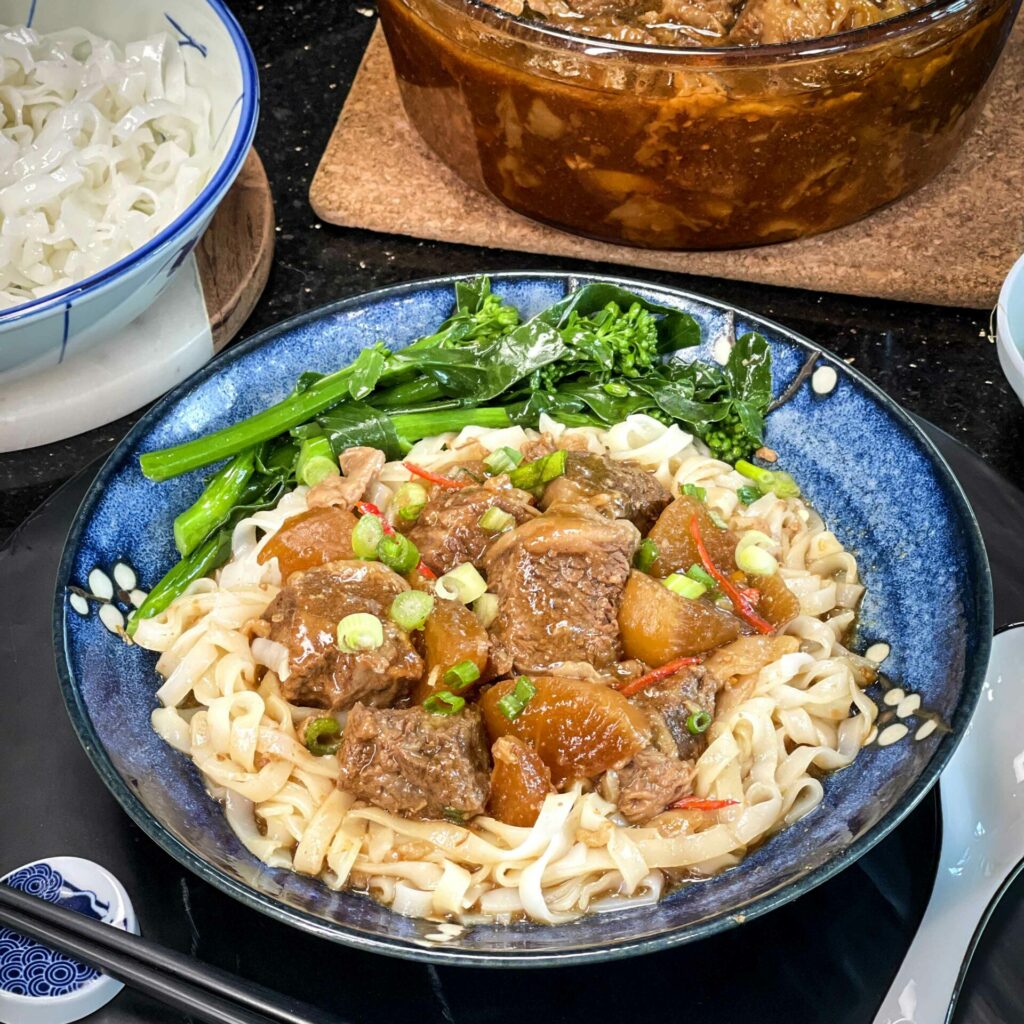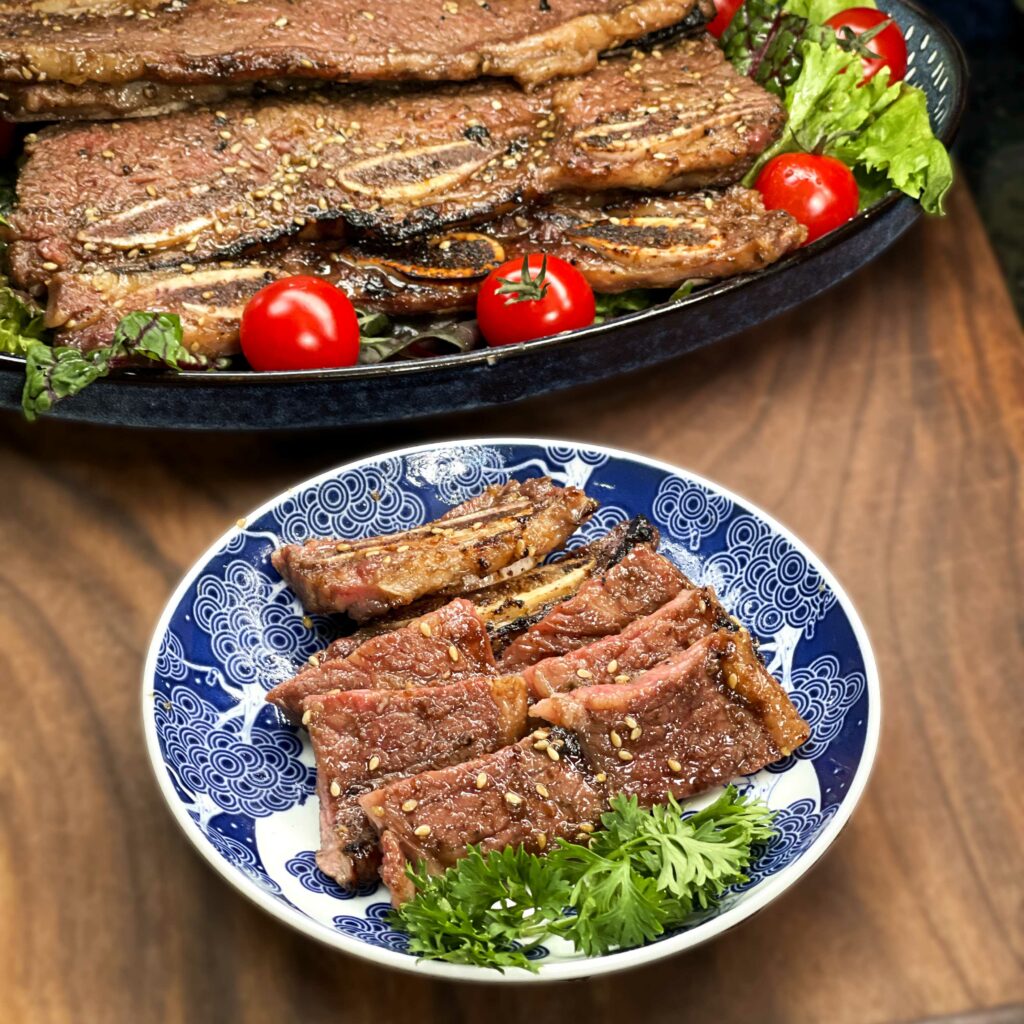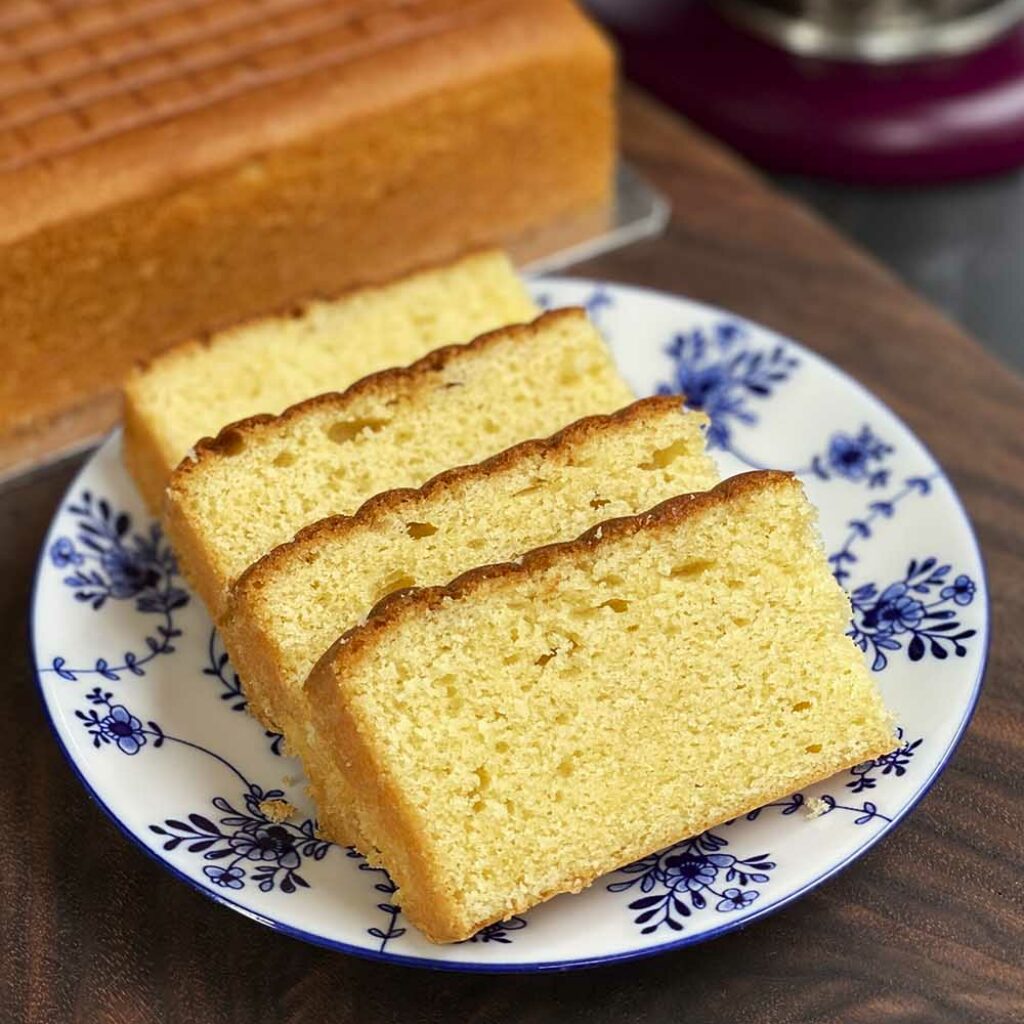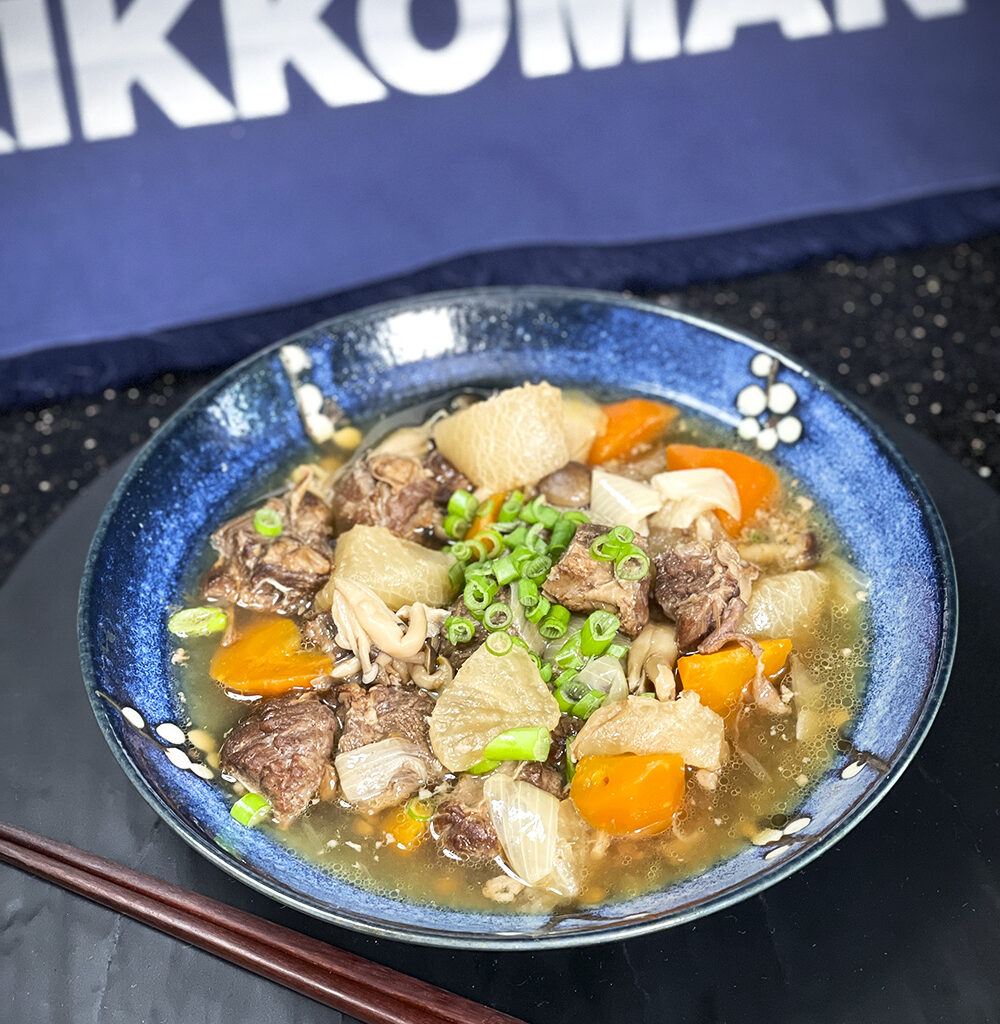Beef rendang is one of those dishes that most people don’t bother to cook at home because of the time and effort it takes. First you need to prepare the ingredients for the rempah, then grind it and fry it till you smoke up the whole house, then add the meat and cook it for hours in order to tenderize the meat!
You don’t have to be intimidated any more! Here is a beef rendang which can be ready in an hour which I dare say is just as tasty. The trick is to use a pre-mix rendang paste and a pressure cooker and adding a few extra ingredients to bring it up a few notches!
Using the Tefal Clipso Minut Duo Pressure Cooker, we can pressure cook the meat first to tenderize it and then turn it into a stewing pot to allow the flavours to meld. The durable non-stick surface makes it very easy to sear the meat and fry the rempah without it sticking to the pot! After that, put on the lid and pressure cook for 30mins to tenderize the beef. The final step is to add the rest of the ingredients, replace the lid and simmer to allow the flavours to meld!
To make the dish a little healthier I replaced some of the beef with cubes of tempeh so you can reduce the consumption of red meat. Because of the non-stick surface, very little extra oil is required to make the dish!
The Tefal ClipsoMinut Duo has become one my most used cooking utensil since I got it a few months ago. Aside from being a pressure cooker, it also functions very well as a slow cooker for making soups and braising meats because the tight lid means there is minimal loss of liquid due to evaporation and there is no chance for the soup to boil over. It is also keeps all the aroma and smells in the pot which means you can fry rempah with the lid on to avoid smoking out the whole house!
Ingredients
Group A
Shin beef 800g (cut into cubes)
Beef rendang pre-mix 1 pack
Coconut milk 400ml
Lemongrass x 2 bruised
Tempeh 1 block (cut into cubes)
Group B
Grated coconut
Extra virgin coconut oil 2 Tbsp
Kaffir lime leaves x 8 (chiffonade)
Tumeric leaves x 2 (optional)
Tomato paste 2 Tbsp
Gula Melaka to taste
Method
Add grated coconut and extra virgin coconut oil to Tefal ceramic wok and fry till brown. Leave to cook and pound to make kerisik.
Add a scant tablespoon of oil in the ClipsoMinut Duo and add the beef cubes. Once the beef is lightly browned, add rendang premix, lemongrass, 1/2 the kerisik and coconut milk. Close the lid and switch to pressure cooker mode. Once pressurized, lower heat and set timer for 30mins.
After 30mins, turn off the heat and allow the pot to depressurize. Open the lid and add Kaffir lime and tumeric leaves and kerisik. Bring to a simmer and add tomato paste, gula melaka and adjust to taste. Close lid and allow to slow cook for 10mins for flavours to meld! Its even better if it is kept overnight!
Places to eat Beef Rendang:
Linda’s Table Private Dining: Nonya Omakase
Farrer Park Food Republic
Warong Nasi Pariaman: Sedap since 1948
You may appreciate these recipes if you own a Tefal:
Japanese Cha Shu w Tefal Home Chef Smart Pro IH MultiCooker
Pan Pizza with Tefal Ingenio
Beef Rendang with Tefal ClipsoMinut Duo Pressure Cooker
Cantonese Style Radish Cake with Tefal Induction Rice Cooker
Orh Nee with Tefal
This recipe was brought to you by TefalSingapore #TefalintheKitchen
Disclosure: Some links above are affiliate links, meaning, at no additional cost to you, we will earn a small commission if you click through and make a purchase.











